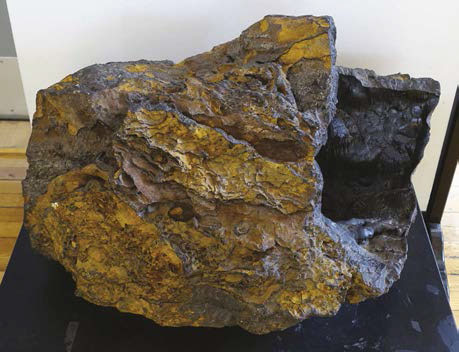
This six-inch specimen of bog-iron ore from Canada exhibits a characteristic rusty, yellow-brown color.
WIKIMEDIA COMMONS
Bog iron could never compete with hematite (iron oxide, Fe3+2O3) and magnetite (iron oxide, Fe2+Fe3+2O4) as a major iron ore because there simply wasn’t enough of it. Today, bog iron is little more than a mineralogical and historical footnote. Nevertheless, because it could be “mined” using just rakes and shovels, and smelted at low temperatures, it was for centuries a vital source of iron for many cultures. All it took to produce metallic iron was a supply of bog-iron ore and charcoal, a clay oven, and a rudimentary knowledge of smelting. And that profoundly impacted history.
An indeterminate mix of iron oxides and hydroxides bog iron occurs as rust-colored nodules in wetland environments. Although individual deposits are always small, they number in the thousands, especially in northern temperate zones where retreating Ice Age glaciers left behind countless wetlands or bogs.